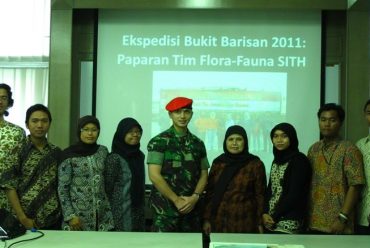Seminar Tamu: HPV infection and evasion mechanisms from innate immunity
SEMINAR TAMU
HPV infection and evasion mechanisms from innate immunity
Bladimiro Rincon Orozco
Division of Viral Transformation Mechanisms, Research Program “Infection and Cancer”
German Cancer Research Center, Heidelberg, Germany
Hari : Jum’at, 19 September 2014
Ruang : Perpustakaan, Lt. 1. Ruang American Corner
Abstract
HPV infection and evasion mechanisms from innate immunity
Bladimiro Rincon Orozco, Martina Niebler and Frank Rösl
Division of Viral Transformation Mechanisms, Research Program “Infection and Cancer”
German Cancer Research Center, Heidelberg, Germany.
Email: b.orozco@dkfz-heidelberg.de
Background and Purpose:
During evolution, high-risk HPVs have developed several strategies that lead to viral persistence, a key event on the way towards anogenital cancer. Our laboratory has unraveled several mechanisms how HPV escape from innate immune response, the first line of defense against viral infections. Moreover, it became clear that in the course of a HPV infection, the virus is always attacking central hubs of the intracellular network that is involved in immunological surveillance: i) counteracting specific interferon-κ expression that represents an important type I interferon of keratinocytes, the major target of an HPV infection ii) degrading interleukin-1β via the proteasome that is one major key player connecting the innate with adaptive immunity iii) abrogating crucial chemokines (such as MCP-1), thereby preventing the recruitment of anti-tumoral macrophages.
Conclusion:
A detailed understanding of the molecular mechanisms underlying HPV immune escape is a prerequisite for the development of therapeutic drugs or vaccination strategies. Moreover, such signatures represent also important molecular biomarkers for early diagnosis, patient stratification and therapeutic decision. An overview about these scenarios will be provided.






